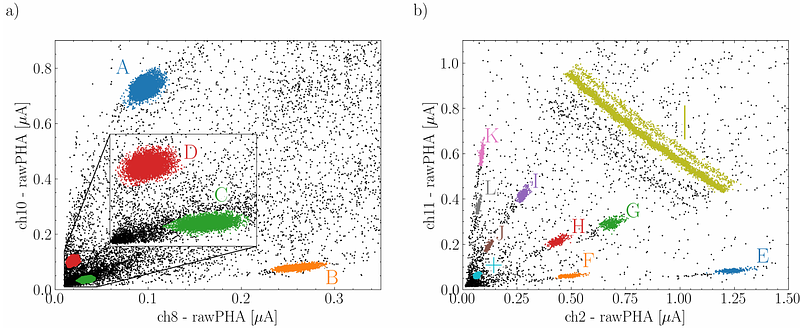Characterization of a TES-based Anti-Coincidence Detector for Future Large Field-of-View X-ray Calorimetry Missions

Characterization of a TES-based Anti-Coincidence Detector for Future Large Field-of-View X-ray Calorimetry Missions
Samuel V. Hull, Joseph S. Adams, Simon R. Bandler, Matthew Cherry, James A. Chervenak, Renata Cumbee, Xavier Defay, Enectali Figueroa-Feliciano, Fred M. Finkbeiner, Joshua Fuhrman, Richard L. Kelley, Christopher Kenney, Caroline A. Kilbourne, Noah Kurinsky, Jennette Mateo, Haruka Muramatsu, Frederick S. Porter, Kazuhiro Sakai, Aviv Simchony, Stephen J. Smith, Zoe Smith, Nicholas A. Wakeham, Edward J. Wassell, Sang H. Yoon, Betty A. Young
AbstractMicrocalorimeter instruments aboard future X-ray observatories will require an anti-coincidence (anti-co) detector to veto charged particle events and reduce the non-X-ray background. We have developed a large-format, TES-based prototype anti-coincidence detector that is particularly suitable for use with spatially-extended (~ 10 cm^2}) TES microcalorimeter arrays, as would be used for a future large field-of-view X-ray missions. This prototype was developed in the context of the Line Emission Mapper (LEM) probe concept, which required a ~ 14 cm^2 anti-co detector with > 95% live time and a low-energy threshold below 20 keV. Our anti-co design employs parallel networks of quasiparticle-trap-assisted electrothermal feedback TESs (QETs) to detect the athermal phonon signal produced in the detector substrate by incident charged particles. We developed multiple prototype anti-co designs featuring 12 channels and up to 6300 QETs. Here we focus on a design utilizing tungsten TESs and present characterization results. Broad energy range measurements have been performed (4.1 keV -- 5.5 MeV). Based on noise and responsivity measurements, the implied low-energy threshold is < 1 keV and a live time fraction of > 96% can be achieved up to 5.5 MeV. We also find evidence of mm-scale-or-better spatial resolution and discuss the potential utility of this for future missions. Finally, we discuss the early development of a soild-state physics model of the anti-co towards understanding phonon propagation and quasiparticle production in the detector.